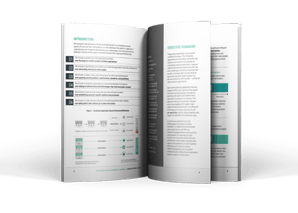By Jeff Williams, Co-Founder, Chief Technology Officer
August 5, 2014
If you’re like most organizations, you’ve got an array of application security tools. Some of them are probably used a lot, some are incredibly irritating, some never seem to work, and some are shelfware. You’ve probably got a mix of open source and commercial tools as well.
But the application security landscape keeps on moving. Tools that provided good value just a few years ago are barely functional now.
Here are just a few of the advances in software development that are making security analysis more difficult. Even for human code reviewers and security testers, these advances make application security hard to test. Static and dynamic tools haven’t advanced much in the past decade, and these advances are preventing them from working on an ever-increasing number of applications.

So, the question is, when is the right time to add another application security tool? As I look at the future of software and where these trends are going, I think it’s pretty easy to predict that organizations are going to continue pushing application software development. Applications are going to continue to get larger and more complex, process increasingly sensitive data, and use more components and frameworks. In addition, it’s pretty clear that software development will continue to accelerate, leaving most traditional security activities in the dust.
Ask yourself if your tools are compatible with the way you expect to be building applications as you go forward. For most software development organizations, I think the following factors are critical.
Software development is a fast-moving unstoppable juggernaut. So application security has to adapt to changes in the way we build software. And that means constantly evaluating whether your toolset is compatible with the way you build software.
 Developing a robust application security program does not need to be a daunting task...
Developing a robust application security program does not need to be a daunting task...Perhaps, all it takes is rethinking your existing program and moving to one that leverages a continuous application security (CAS) approach. Organizations practicing CAS quickly determine how a new risk affects them, design a defense strategy, and measure their progress to 100% coverage. By implementing eight functions within an enterprise you can assemble an effective application security program.

.jpg)
Jeff brings more than 20 years of security leadership experience as co-founder and Chief Technology Officer of Contrast Security. He recently authored the DZone DevSecOps, IAST, and RASP refcards and speaks frequently at conferences including JavaOne (Java Rockstar), BlackHat, QCon, RSA, OWASP, Velocity, and PivotalOne. Jeff is also a founder and major contributor to OWASP, where he served as Global Chairman for 9 years, and created the OWASP Top 10, OWASP Enterprise Security API, OWASP Application Security Verification Standard, XSS Prevention Cheat Sheet, and many more popular open source projects. Jeff has a BA from Virginia, an MA from George Mason, and a JD from Georgetown.
Get the latest content from Contrast directly to your mailbox. By subscribing, you will stay up to date with all the latest and greatest from Contrast.